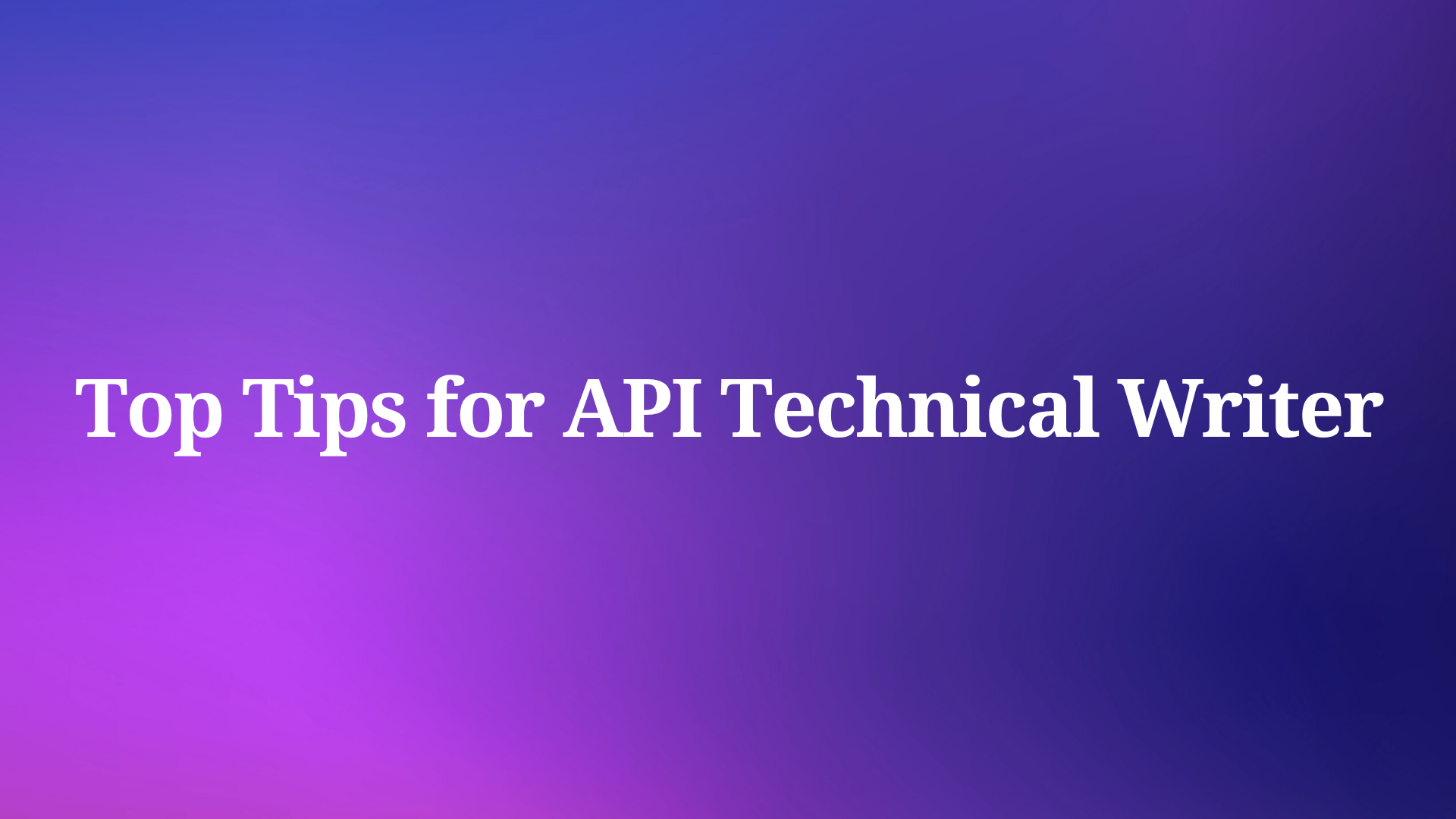In the rapidly evolving world of software development, API tools are vital for creating, testing, and managing APIs with precision and efficiency. Gone are the days of manually writing endless lines of code just to test an API's functionality. The emergence of GUI tools for API design and testing has revolutionized the developer’s workflow, streamlining processes that were once tedious and error-prone.
API GUI tools like Apidog, offer intuitive interfaces that eliminate the need for complex coding, allowing developers to indulge in a more efficient, visually guided experience. This article dives into how these tools simplify API design and testing, empowering developers of all levels to focus on the bigger picture: delivering robust, reliable APIs.
Overview of API Design and Testing
Before we dive into the advantages of using GUI API tools, it’s essential to understand the importance of API design and testing. At its core, API design dictates how a system communicates with other systems, making it the foundation of modern software integration. A well-structured API ensures seamless interactions between different applications and services, creating a smooth user experience.
API testing, on the other hand, ensures that APIs function correctly, adhering to performance, security, and reliability standards. Proper API testing validates the data exchange between systems and ensures that errors, delays, or security breaches are minimized.
In traditional settings, developers used code-heavy approaches for both tasks, which required an intimate understanding of backend logic and testing environments. This can be cumbersome and error-prone, especially for those who aren’t full-stack developers. However, API GUI tools have changed the game by making API design and testing more accessible, efficient, and error-proof.
How GUI Tools Simplify API Creation?
The biggest advantage of GUI tools for API design is their intuitive, visual nature. These tools, such as Apidog, take what would normally be a text-based, complex task and transform it into an interactive, visual process. Here’s how they make API creation easier:
- Visual User Interface for API Mapping: Most GUI tools feature drag-and-drop functionalities, allowing developers to visually construct API endpoints, request methods, and response structures without having to write a single line of code.
- Pre-built templates: GUI tools come with ready-made templates for common API types like REST, SOAP, and GraphQL, reducing the time spent on setting up basic API structures.
- Real-time previews: One of the most powerful features of GUI tools is the ability to preview API behaviors in real-time, providing instant feedback on how changes to the API design will impact functionality.
- Collaboration: These platforms often include collaboration features, enabling multiple developers to work on the same API simultaneously, streamlining team efforts.
- Schema Validation: Schema validation ensures that the API follows a defined structure, verifying that request and response data conform to the expected format (e.g., JSON, XML). This feature helps maintain consistency across API endpoints and prevents common errors like missing parameters or data type mismatches.
- Version Control for APIs: API versioning allows developers to manage multiple versions of an API, tracking changes and ensuring backward compatibility. This feature is crucial for ensuring that different versions of an API can coexist, which is often required in long-term projects where clients may rely on older API versions.
- Automatic Documentation Generation: Modern API GUI tools can automatically generate API documentation based on the design. This includes detailed specifications for endpoints, parameters, request/response formats, and authentication methods. By automatically syncing documentation with the API design, this feature reduces the manual effort required to keep documentation updated.
- API Lifecycle Management: Some GUI API tools include lifecycle management features that guide the API from design to production. These features allow developers to track API progress, set approval gates, and implement best practices, ensuring that the API is designed, tested, and deployed systematically.
With visual API creation, even less experienced developers can craft complex API architectures without fear of syntax errors or misconfigurations. Apidog, in particular, excels in this area with a clean, interactive user interface that allows users to visualize API flows, making the design process significantly easier.
Key Features to Enhance API Testing
API testing is a critical phase of the API development cycle, and GUI API tools offer a variety of features that simplify and enhance the testing process:
- Automated testing: Many GUI tools, such as Apidog, come equipped with automated testing features. These allow developers to create and run tests based on predefined conditions, saving time and ensuring consistent results.
- Mock servers: GUI tools can simulate real-world server environments, enabling developers to test APIs without needing live endpoints. This allows for more flexible and extensive testing, especially in development stages where real endpoints might not yet exist.
- Visual debugging: Visual debugging tools enable developers to identify issues in API calls instantly, providing clear, easy-to-read error messages and allowing for quick troubleshooting.
- Performance testing: GUI tools can test how APIs perform under varying loads, ensuring they can handle expected traffic volumes.
For example, Apidog offers comprehensive automated testing capabilities, allowing users to set up test cases without writing extensive scripts. Its mock server functionality provides a controlled environment where APIs can be tested against different scenarios, significantly reducing the risk of unexpected issues post-deployment.
Best GUI Tools for API Documentation, Debugging and Testing
Documentation is often overlooked in API development, but it plays a crucial role in maintaining clarity and usability. Here are some of the top API GUI tools that simplify documentation, debugging and testing:
1. Apidog
Apidog leads the charge with its robust, user-friendly platform that offers both API design and testing features. Its visual interface allows developers to generate documentation automatically as they create and test APIs. This means your API specs are always up-to-date, saving valuable time.

Key highlights of Apidog:
- Visualized API Design Dashboard: Apidog’s GUI allows users to design APIs by simply dragging and dropping components, such as endpoints, request types (GET, POST, PUT, DELETE), and data models. This reduces the need to manually code every detail, cutting down the time required to create complex APIs.
- Pre-built Templates and Data Models: Apidog offers pre-built templates for different types of APIs (REST, GraphQL, SOAP, etc.) and commonly used data models. By using these templates, developers can focus on customizing the API to their needs without having to define every structure from scratch.
- Real-Time Error Identification: Apidog provides real-time error feedback as developers design and run their APIs. It highlights issues such as missing parameters, invalid data types, or incorrect authentication setups. This helps catch mistakes early in the development process, reducing the need for later fixes.
- Automatic API Documentation Generation: As developers design APIs, Apidog automatically generates detailed API documentation in real-time. This includes endpoint specifications, request parameters, response structures, and authentication methods. The documentation is always up-to-date and easily shareable with team members or external clients.
- Mock API Server for Testing and Debugging: Apidog allows developers to create a mock API server that simulates real-world API behavior without needing to deploy it on a live environment. This feature is invaluable during debugging, as it allows developers to test different scenarios, API responses, and error conditions in a controlled environment.
- Comprehensive Test Case Management: Apidog provides tools to create and manage test cases for each API endpoint. Developers can set conditions, expected results, and assertions for each test case, ensuring that the API performs reliably across different conditions.
- Load Testing: Apidog includes a built-in feature for performance and load testing. This allows developers to simulate high-traffic scenarios to see how the API performs under heavy usage. Testing for scalability ensures that the API can handle the expected number of users and requests in production environments.
- Integrated Testing and Documentation: Apidog’s integration of API testing with documentation ensures that any changes to the API design automatically update both the tests and the documentation. This feature reduces the risk of inconsistencies between the API design and what is actually tested and documented.
Apidog’s GUI-based approach to API design, debugging, and testing offers a comprehensive solution that addresses the most common pain points of API development. By integrating visual design tools, real-time debugging feedback, and automated testing features into one platform, Apidog empowers developers to focus on creating high-quality, error-free APIs efficiently.
Whether you are designing an API from scratch, debugging issues in development, or running automated tests to ensure robustness, Apidog provides the user-friendly interface and powerful tools you need to streamline your workflow and enhance productivity.
2. Insomnia
Insomnia’s minimalist design makes it ideal for those who want a simple, no-frills tool for API design, testing, and debugging. Its user interface is clean, and it integrates well with various third-party tools for more comprehensive documentation efforts.
3. Swagger
Swagger has long been a go-to for API documentation. Its intuitive editor provides real-time feedback as APIs are designed, making it easier to ensure that everything is correct from the outset.
Integrating API GUI Tools into Your Development Cycle
The true value of GUI API tools becomes evident when they are seamlessly integrated into your development workflow. Instead of switching between multiple platforms for design, testing, and documentation, GUI tools offer one-stop solutions. Here’s how you can integrate these tools efficiently:
- Early Design: Start by using a tool like Apidog to visually map out your API. With its real-time preview and collaboration features, your team can align on the API structure before writing any code.
- Testing during Development: Use the integrated testing features of GUI tools to catch issues early, running automated tests after every development sprint. This ensures that any bugs or misconfigurations are identified and resolved quickly.
- Continuous Documentation: As you build and test your API, the documentation generated by GUI tools like Apidog ensures that your API remains accessible and understandable for both current and future developers.
Conclusion
API GUI tools have transformed the API development landscape, making API design and testing more accessible and efficient. With tools like Apidog, developers are empowered to visually create, test, and document APIs in one unified platform. By leveraging these user-friendly interfaces, teams can focus on building robust APIs without getting bogged down by complex, code-heavy processes.
By integrating these tools into your development cycle, you can reduce errors, streamline workflows, and ultimately deliver better APIs faster. Whether you're an experienced developer or a novice in the API space, embracing API GUI tools will undoubtedly enhance your productivity and the quality of your APIs.



